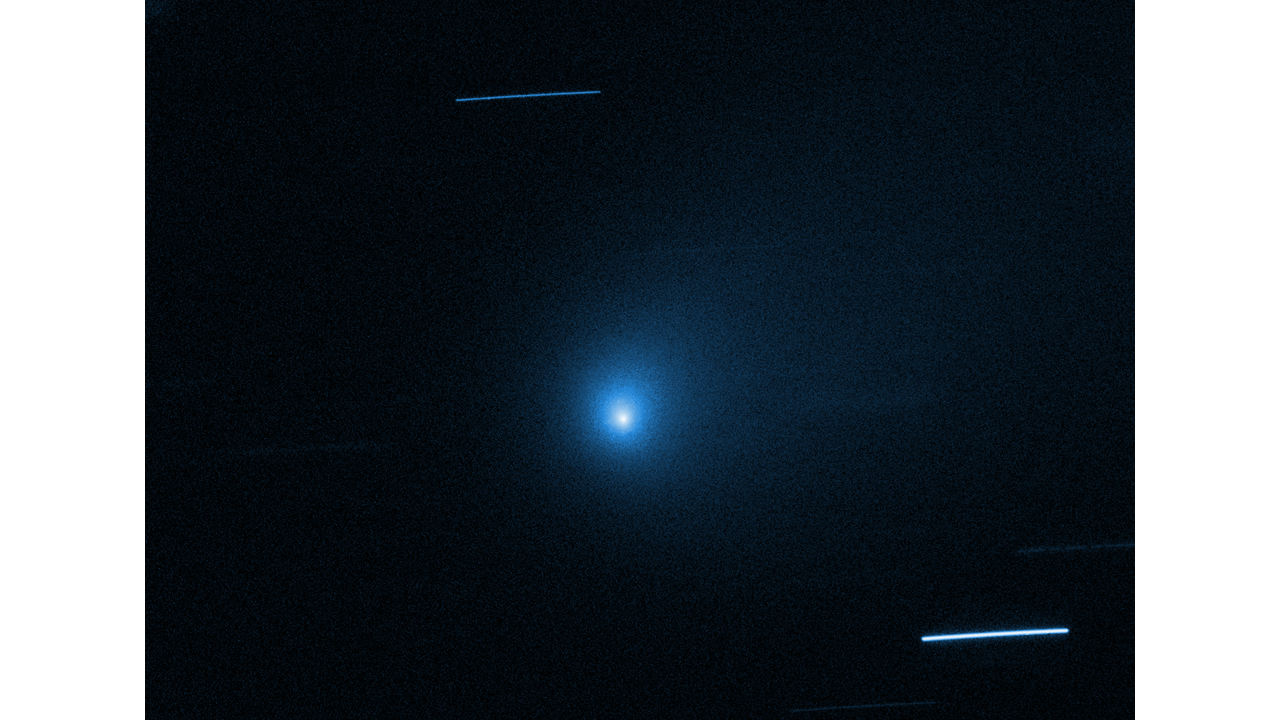
HOUSTON—2I/Borisov, the second comet of extrasolar origin to approach the Sun in recent years, brought with it an unprecedented glimpse into the chemistry of the planet-forming protoplanetary disc surrounding another star.
Bottom line, the surprisingly carbon monoxide (CO)-rich 2I/Borisov likely formed in a frigid region very far from its parent star before it was flung into interstellar space by the gravitational forces from a passing star or giant planet. It then cruised for millions to billions of years through interstellar space before being discovered on Aug. 30, 2019, by a Russian amateur astronomer, Gennady Borisov.
Findings from research conducted by 25 multinational scientists using observations made with the Atacama Large Millimeter/submillimeter Array (ALMA) in Chile and the Hubble Space Telescope (HST) were published April 20 the journal Nature Astronomy. They were titled, “Unusually High CO Abundance of the First Active Interstellar Comet” and “The Carbon Monoxide-rich Interstellar Comet 2I/Borisov.”
“2I/Borisov gave us the first glimpse into the chemistry that shaped another planetary system,” said Stefanie Milam, co-author of the ALMA study and a planetary scientist at NASA’s Goddard Space Flight Center (GSFC). “But only when we can compare the objects to other interstellar comets will we learn whether 2l/Borisov is a special case, or if every interstellar object has unusually high levels of CO.”
Observations of 2I/Borisov were made with ALMA and HST between December 2019 and January 2020 while the interstellar visitor was just outside the orbit of Mars. The concentrations of CO emerging from the nucleus were estimated at nine to 26 times those of the average Solar System comet, whose most abundant chemical constituent is water ice.
Hydroxyl (OH) has also been detected in the cometary visitor’s coma and is believed to be a product of water dissociation in the nucleus from light energy.
ALMA detected a second element in the gas ejecting from 2I/Borisov, hydrogen cyanide (HCN), not a surprise and in concentrations similar to Solar System comets.
The first interstellar object detected in the Solar System was 1I/Oumuamua, first noticed in October 2017 by the University of Hawaii’s Pan-STARRS1 telescope while on a departure trajectory. The course of the long, narrow, fast-moving interstellar visitor and the absence of an active gas and dust cloud led to speculation over whether Oumuamua was a renegade asteroid, comet, or even an alien spacecraft.
The HST study, led by Auburn University physicist Dennis Bodewits, offers some conclusions on 2I/Borisov’s origins, assuming its composition is similar to other comets in its Solar System of origin.
— The star system is distinct from the Sun’s.
— 2I/Borisov must have formed and remained beyond the distant star system’s CO snow line, or the boundary beyond which there is always frozen CO, which requires temperatures of minus 420F, or lower, the lowest temperatures found in space.
— The comet’s host star system was dynamic, undergoing interactions that stripped away planetesimals with primordial CO and H20 while preserving the CO.
One such candidate environment is that of an M-type, or cool, low mass red star, the most common in the Milky Way Galaxy, according to Bodewits and his colleagues.
Measurements of cometary composition provide crucial input for theories of chemical evolution within the protoplanetary disks of stars and the raw materials available for the formation of planetary bodies and their atmospheres, according to the ALMA team. It was led by astrochemist Martin Cordiner of NASA’s GSFC and the Catholic University of America.
“Observations of the interstellar comet 2I/Borisov provide unique insights into the chemistry that occurred during planet formation in another stellar system,” the ALMA study team concludes in part.





